Ijraset Journal For Research in Applied Science and Engineering Technology
- Home / Ijraset
- On This Page
- Abstract
- Introduction
- Conclusion
- References
- Copyright
Environmental Impact Assessment of Natural Vs Synthetic Fiber Reinforcement in Polymer Composites
Authors: Darshan C, Varun K S, Swamy S R
DOI Link: https://doi.org/10.22214/ijraset.2024.65423
Certificate: View Certificate
Abstract
This research examines the environmental influences of natural and synthetic fiber reinforcement in polymer composites specifically the aspects of greenhouse gas emissions, energy demands, biodegradability, and mechanical characteristics. Some organic fibers like jute, hemp, and flax are more eco-friendly than synthetic fiber because during the process of growing, they need less energy and they also absorb carbon dioxide. On the other hand, synthetic products such as glass and carbon fibre, which exhibit superior mechanical properties are disadvantageous in this context as they are energy-intensive in manufacture and difficult to dispose of sustainably. The study looks at the use of water and land in the production of natural fibers vs. synthetic fibers and can compare major trade-offs in terms of resource consumption. Overall, both investigations indicate appropriate uses for each fiber sort, enabling purchasers to make educated decisions in a scope of business sectors. In addition, the paper stresses the need for the creation of eco-friendly processes for synthetic fiber production together with the improvement of the performance characteristics of natural fibers for high-performance applications. In light of the above findings, there is, therefore, the need to consider environmental constraints and the desired performance characteristic when selecting the material to be incorporated into polymer composite.
Introduction
I. INTRODUCTION
Polymer composites incorporating fibers have transformed the field of material science by proffering superior strength/weight ratio, durability, and flexibility in multiple applications of automobile, space, construction, and consumer products. The reinforcing fibers of these composites give vital characteristics to their mechanical behavior, durability, and sustainability.
Thus, the type of fiber and its origin is the problem that, as industries focus on sustainable solutions, becomes a subject of critical analysis in terms of environmental effects. The purpose of this research paper is to evaluate the impact of employing natural and synthetic fibers in polymer composites and identify the drivers of each.
A. Context and Background
Flax, Jute, Hemp, and sisal-based natural fibers known for their natural and renewable nature have attracted major attention. They decompose easily, have fewer carbon outputs, and sometimes use less energy in the production stage than synthetic varieties. Also, natural derivatives can be obtained through sustainability, thus promoting agricultural industries as well as promoting the circular economy. However, synthetic fibers such as glass, carbon, and aramid fiber are manufactured fibers mainly from petrochemical origin. These fibers provide incredible strength, high heat stability, and very high levels of durability which are attributes that make them almost essential to high-performance applications. Their manufacturing is power-hungry and creates large amounts of byproducts and disposal causes longer-term environmental damage.
B. Research Objective
- To measure the extent to which natural and synthetic fiber reinforcements affect sustainability in the context of greenhouse gas emissions, energy use, and resources
- To compare the biodegradability and life cycle management aspects of fiber-reinforced polymer composites from natural and synthetic sources
- To compare the water and land requirements of natural fiber production with the requirement of synthetic fiber production.
- To determine the suitability of natural and synthetic fiber composites and the range of performances required for each
- To decide whether the synthetic fibers have any environmentally favorable characteristics or if improvements in their methods of recycling and manufacturing can be made.
C. Research Questions
- What are the consequences of naturally and synthetically derived fiber composite on the environment during manufacturing, utilization, and disposal?
- What is the comparative analysis of energy intensity, greenhouse gas emission, water usage, and natural and synthetic fiber waste production?
- What are the advantages and benefits of using natural fibers as substitutes for high-performant applications of synthetic fibers?
D. Importance of Study
The research is relevant also since it seeks to contribute to the reduction of environmental impact, something that is integral to any manufacturing today as the globe seeks to promote sustainable production. The complexity of fiber types in composites brings stark awareness of the effect on the environment and aids in rational decisions when it comes to designing composites for industries pursuing carbon neutrality. Given that natural fiber composites might boast of being greenage and synthetic fibers provide high performances, this study reveals explicit decisions made inform not only the performances of products but also the safe environment.
E. Scope and Structure
The sample population of this study includes assessment data collected from at least two firms, environmental assessments that are primarily in the form of a lifecycle assessment (LCA) that measures ecological footprint at different stages of a product. The approach entails compiling and comparing LCA data on natural and synthetic fibers derived from research studies, industrial reports, and environmental databases. They are carbon emissions, energy, water, and toxicity which are the sustainability indicators for each of the fiber types.
This paper is organized to give an overview of the environmental implications of fiber-reinforced polymer composite and to provide the readers with a clear understanding of the implications of choosing natural or synthetic fiber on the environment and the industrial consequences. Therefore, through a comparison of these materials based on more rigorous environmental analysis, this study provides useful additions to the current discourse on material choice for polymer composite applications in a more sustainable manner.
II. LITERATURE REVIEW
The applications of fiber-reinforced polymer composites can be seen widely in the automotive industries, aerospace industries, and construction industries since these materials provide extensive mechanical as well as durability advantages. With or without extraneous or unprepared raw materials forming fillers, fibers help to improve the characteristics of polymer matrices; offering strength, stiffness, or elasticity.
A. Fiber Reinforcement in Polymer Composites – A Natural Approach
Natural fibers are plant-based including flax, hemp, jute, and sisal and it is well known that these fibers are renewable sources, biodegradable, and environmentally friendly. These fibers are preferable in production because they typically have a lower energy use and hence smaller carbon footprint than synthetic fibers.
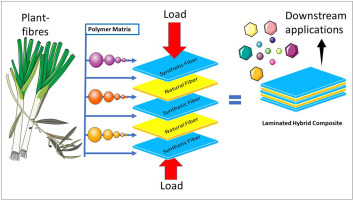
Figure 1: Fiber Reinforcement in Polymer
However, there are certain disadvantages associated with the use of natural fibers especially when areas of high strength and high durability are required. Natural fibers are also hydrophilic, that is, they can absorb water and therefore, can degrade, and reduce their mechanical properties over time [1]. A challenge associated with water absorbent nature of these natural fibers is that the use of exposure to high humidity or water leads to the reduced life expectancy and reliability of the resultant composites.
Furthermore, the mechanical features of natural fibers including tensile stress and thermal resistance are different depending on the type of crop, growth condition, and geographical location. This can make it difficult to control composite property variations and ensure that all parts meet high-performance requirements where necessary.
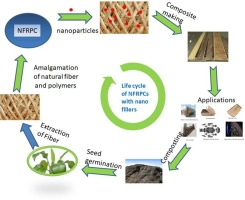
Figure 2: Application of Fiber Reinforced Polymer
B. Modernization of Natural Fiber Reinforcement in Polymer Matrix Composite
Glass, carbon, and aramid fibers are complete of petrochemical origin and recognized for their high mechanical properties such as strength, impact resistance, and environmental degradation [2].
Nevertheless, there is a controversy concerning the environmental cost of synthetically produced fibers. The production of glass and carbon fiber involves a great amount of energy needed in most cases from non-renewable sources [3]. The production includes the melting of sand and other minerals at high temperatures, a process that consumes many energy resources and produces carbon dioxide.
Disposal is also one significant environmental impact of synthetic fiber composites. These materials are not environmentally friendly once they have served their usefulness; they are dumped in the landfills hence environmental pollution in the future. There are a few methods that can be used for recycling synthetic fiber composites but they are generally energy-intensive and expensive and reuse material of worse quality when compared to the original material.
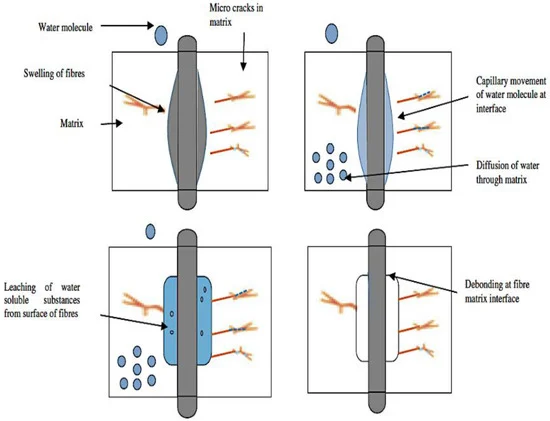
Figure 3: Damage Behavior Impact on Natural Polymer
C. Life Cycle Analysis of Natural and Synthetic Fibers
Life cycle assessments (LCA) as a tool offer a comprehensive assessment of the environmental footprint of natural and synthetic fibers right from their extraction to usage and disposal. The analysis demonstrated that in most cases natural fibers have a better environmental footprint throughout their extraction and processing since they are bio-degradable coming from renewable resources and use less energy to produce [4]. The production and transformation of natural fibers emit less greenhouse gases than synthetic fibers, in general. Also, natural fiber is bio-degradable and thus causes less harm to the environment than synthetic fibers at the disposal stage. However large-scale natural fiber farming has its drawbacks like soil erosion, WATER POLLUTION BY PESTICIDES/, fertilizers, and NO-LOOPING.
Meanwhile, the overall environmental impact indicators of synthetic fibers are higher in the phase of extraction and production, mainly due to the use of fossil resources and energy in the fibers’ production. However, synthetic fibers are more durable and may stand up better to repeated use and stress and may even partially counterbalance some of the negative environmental effects of the need for frequent replacements.
In other words, the assessment of the overall environmental impact of natural fibers is normally higher in comparison to synthetic fibers, especially in cases where the product’s required performance is moderate and the service life is comparatively short [5]. They are still useful in today’s rigorous applications but come with a higher planet penalty across their life cycle.
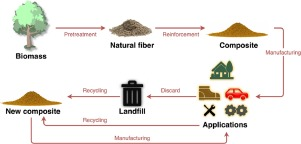
Figure 4: Recycling of Natural Fiber Composition
D. Industrial Applications and Performance Considerations
Synthetic fibers are generally used in applications where mechanical strength, high durability, and heat resistance are the main requirements, such as the car industry, aviation, and construction. Such applications require a material that can exhibit high stress, and temperature, and resist environmental loads.
The opportunity to develop composites with natural and synthetic reinforcement structures has recently attracted interest as a means to optimize both the ecological burden and load-carrying capacity [6]. Applying both fiber types in the hybrid composites is said to improve the properties of the material as well as decrease the problems of synthetic fibers in the environment.
E. Examining the Flaws in the Tension between Environmental Costs and Functionality
With natural and synthetic fibers as the reinforcement material, the green aspects need to be balanced with the mechanical performance of the composite. This paper shows that natural fibers are environmentally superior to synthetic fibers due to their lower CO2 emissions, energy consumption, and biodegradation [7]. They further SD goals by advocating for the use of renewable resources in the production of products hence cutting down the use of fossil energy sources. However, their efficiency declines in advanced sectors and have poor resistance to moisture and degradation thus being less utilizable in high-performance industries.
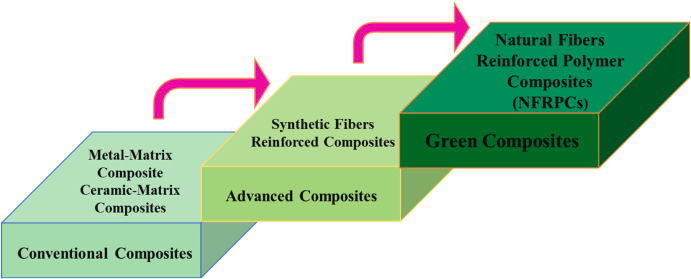
Figure 5: Sustainable Materials for Natural Fiber
Synthetics give superior performance, strength, and durabilities needed in utilitarian and heavy-duty applications as well as in safety-critical applications. However, they are very costly socially and economically since most of them are produced using lots of energy, are derived from non-renewable resources, and, have limited ways of disposal after their useful life span. Although synthetic fiber might be required in some applications, more and more industries are looking for other material choices and designs that could minimize synthetic fiber use.
III. METHODOLOGY
The approach to this research centers on the comparative analysis of the environmental impact of natural and synthetic fiber reinforcement in polymer matrix composites. Each fiber type receives an assessment based on the environmental footprint they have during their respective life cycle, under this assessment, a secondary type of data is used. To achieve the research objectives of comparing the sustainability and environmental performance of natural and synthetic fibers, this study will consider each of the following phases:-material acquisition; production; use; and end-of-life disposal [8]. The study uses a systematic method including data, LCA, comparison and analysis, and environmental assessment.
A. Data Collection
The data for this research is collected from peer-reviewed articles, research papers and scientific journals, environmental databases, and published reports of industries and organizations. These sources give the required laminate lifecycle and environmental characteristics of both natural and synthetic fiber-reinforced polymer composites. Key data include:
- Material properties: Ultraviolet light resistance and energy absorption, then and now; density, tensile strength, water absorption, and thermal stability then compared with now for natural fiber (jute, flax, hemp) as well as synthetic fiber (glass, carbon, aramid).
- Energy consumption: Information on consumption of power during extraction, processing, and production of fiber-reinforced composites [9].
- Greenhouse gas emissions: In addition, the data of emissions of each phase of their lifecycle, including the stage of production and disposal at the end of the lifecycle.
- Water and land use: Resource exploitation in the growth of natural fibers as compared to the realization of synthetic fibers.
- Waste management: Data regarding biodegradation reuse, or recycling and most commonly applied solutions for final disposal.
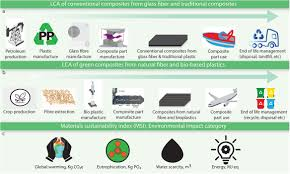
Figure 6: Advance Sustainable System in Natural Fiber
This approach relies on verified environmental databases from the ELCD and other reference databases specializing in material management and other important information on the environmental profiles of materials [10]. A limitation of this research is that this study only employs secondary data, but this is an advantage because it makes it easier to pick well-validated environmental metrics from larger-scope studies.
B. Lifecycle Assessment (LCA) Framework
LCA framework is used to validate and evaluate the total environmental footprint of incorporating natural and synthetic fibers in polymer matrix composites. The present study harnesses the LCA method as a systematic framework for capturing and assessing all the stages in the lifecycle of fiber-reinforced composites. Following the guidelines of the ISO 14040 and ISO 14044 standards, the LCA is divided into four main stages: GA established goal and scope, followed by inventory, assessment, and interpretation.
- Goal and Scope Definition: This phase gives direction to evaluate the synthesis of natural & synthetic fibers in polymer composites & green metrics, CFP, WUE, LUW, & WW perfectly match with this phase [11]. As such, the range includes pre-production through the production process and disposal of the final product.
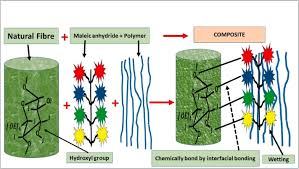
Figure 7: Surface Modification of Plant Fibers
- Inventory Analysis: This stage entails the collection of resource data on inputs and consequences in each of the identified life cycle phases. Within natural fibers, this covers information on; farming practices, the use of fertilizer and pesticides, and energy used in fiber milling. Information on fossil fuel consumption, energy demand for processing polymer with high temperatures, and other wastes generated are given for synthetic fibers.
- Impact Assessment: The LCA’s impact assessment phase analyses the environmental importance of all the inputs and outputs generated during the inventory analysis. This research is based on indices like GWP, water, land, energy, and waste [12]. They are selected more or less to offer a balanced picture of impact types that can be associated with environmental consequences.
- Interpretation: The interpretation phase examines features regarding the consequences and the assessment of the natural and synthetic fibers concerning their environmental impact. By interpretation, this work discusses the trade-off between environmental concerns of the materials and the performance of the materials needed in construction for better decision-making in material selection for sustainable construction [13].
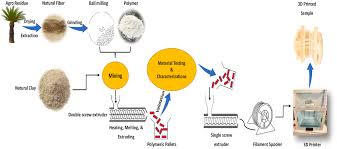
Figure 8: Natural Fiber Adoption
C. Comparative Analysis
A comparison of natural and synthetic fiber reinforcement is made and presented using the outcome of the LCA. This entails benchmarking each fiber type’s ecological footprint against significant indicators based on normalized data. Each fiber type is evaluated on the following dimensions:
- Resource Efficiency: Managing energy consumption or fossil fuel to underline the differences between each fiber type. Natural fibers are relatively easier to extract than synthetic fibers like glass and carbon since they involve high energy such as high temperature.
- Emission Profile: Comparing and contrasting carbon emissions level by level within the identified lifecycle phases. The fibers coming from natural sources have low levels of emissions compared to synthetic fibers because they use fossil fuels during their manufacturing [14].
D. Green Strain Assessment
The primary indicators that we focus on to assess the environmental consequences of our solutions include the global warming potential (or GWP), consumption of land and water resources, energy, and waste production. The results are presented as quantitative and qualitative comparisons:
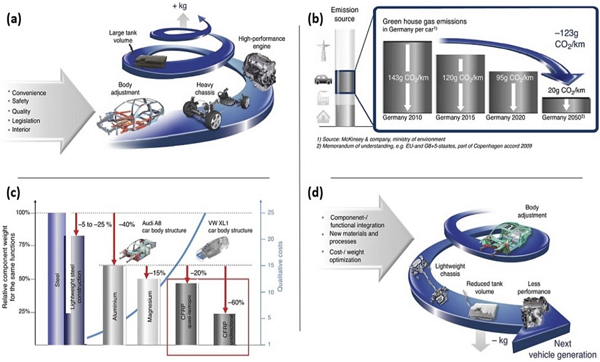
Figure 9: Natural Fiber Reinforced Polymer
- Global Warming Potential (GWP): Observed when adding up carbon dioxide and other secondary greenhouse gas emissions per lifecycle of each fiber type. A comparative analysis of the naturally occurring fibers has a lower GWP compared to synthetic fibers where particularly, Carbon fibers have a higher value of GWP.
- Land and Water Usage: Assessed mainly in terms of its natural fibers as these call for agricultural land and water [15]. Nonetheless, the production of synthetic fibers also contributes in another way, to land use change through the extraction and processing of fossil fuels.
- Energy Demand: Compared for each fiber type, thus, natural fibers are expected to use less energy in their production. Specifically, Synthetic fibers with carbon and Aramid fiber enhancement increase energy consumption due to their demanding production processes.
- Waste and End-of-Life Impact: Examining the aspect of each fiber end of life properties, including biodegradable aspects of the natural fiber and non-biodegradable character of synthetic fiber. Difficulties in recycling hybrid composites which refer to the utilization of both natural and synthetic fibers are also examined.
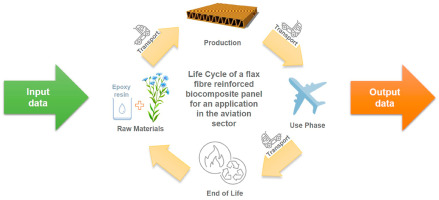
Figure 10: Natural Fiber Polymer Composites
E. A Discussion of Limitations and Ethical Considerations
This methodology has embedded limitations; One of the major weaknesses of dependent on secondary sources of data is that it may not be possible to look at the more recent technological development in fibers manufacture or recyclability. Secondly, the use of data from different sources creates differences in reporting environmental impacts [16]. To overcome these challenges, the present work uses a standardized LCA framework to reduce variability in data and increase the reliability of its results.
Ethical issues relate to the kinds of data to be obtained and how those data will reflect the harm each type of fiber has on the environment. Accountability of reporting makes certain that this research advances the knowledge on sustainable material selection without exaggerating the consequences on fak more than nature.
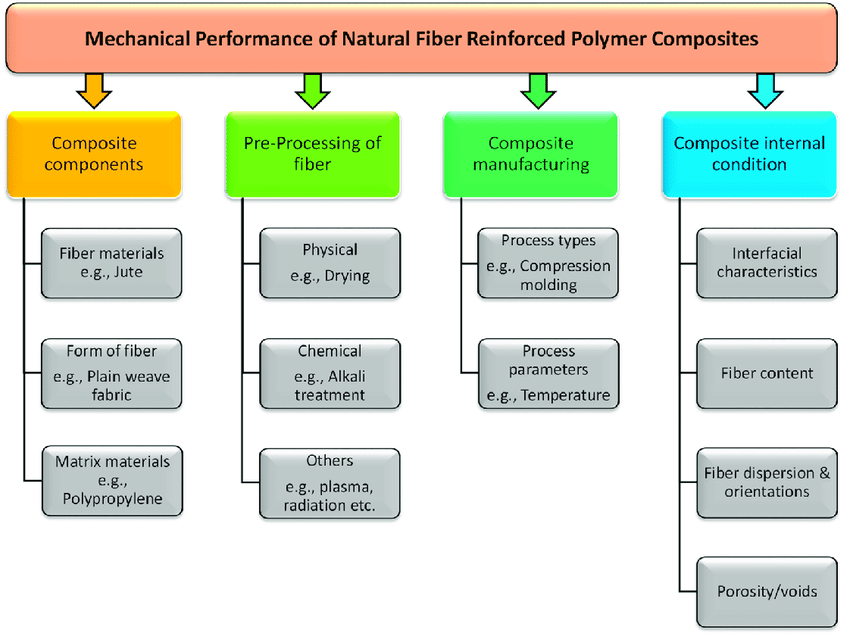
Figure 11: Factor Influencing Natural Fiber Reinforcement
IV. FINDINGS
The results of the present work contribute to the understanding of the environmental effects of using natural and synthetic fiber reinforcements in polymer matrices. Applying secondary data and LCA outcomes we presented the comparison of natural (jute, hemp, flax) and synthetic (glass, carbon, aramid) fibers based on several critical indicators. Comparative analysis is comprised of such factors as global warming potential, energy reconsideration, water and land consumption, and waste production. These results provide a multifaceted view of potential trade-offs and opportunities related to disparate fiber types.
A. Global Warming Potential also called GWP
Another relevant environmental concern index is global warming potential (GWP), meaning the overall amount of greenhouse gasses embodied in each kind of fiber throughout the lifetime. Table 1 offers a view of GWP, in terms of emissions (kg CO?-equivalent per kg of the composite material), of chosen natural and synthetic fibers.
|
Fiber Type |
GWP (kg CO?-eq/kg) |
Notes |
|
Jute |
1.2 |
Includes carbon sequestration during growth |
|
Hemp |
1.4 |
Sequesters carbon in the plant phase |
|
Flax |
1.5 |
Limited emissions from agricultural processes |
|
Glass Fiber |
2.8 |
Energy-intensive manufacturing |
|
Carbon Fiber |
12.0 |
High emissions due to fossil fuel-based processes |
|
Aramid Fiber |
9.5 |
Similar to carbon fiber but with slightly lower GWP |
In Table 1, comparing GWP revealed that natural fiber has lower GWP than synthetic fiber in detail. Jute, hemp, and flax present GWP from 1.2 to 1.5 kg CO?-eq/kg, including carbon sequestration in plants. It was observed that the synthetic fibers such as the glass and the carbon fibers exhibit higher GWP values. The GWP of carbon fiber is the highest with 12 kg CO?-eq/kg; this is because carbon fiber manufacturing requires substantial energy and the major
source of energy is from fossil fuels. Given this high GWP, focus is placed on the environmental impacts of synthetic fibers in structural applications although these are high-performance materials.
B. Energy Demand
The energy uses per fiber type differ through their lifecycle because of the variations in extraction processing and manufacturing techniques. Table 2 shows the energy consumption in MJ/kg of natural and synthetic fiber.
|
Fiber Type |
Energy Demand (MJ/kg) |
Manufacturing Stage Contribution (%) |
|
Jute |
10 |
Harvesting and processing |
|
Hemp |
12 |
Lower energy requirements for processing |
|
Flax |
15 |
Agricultural energy input |
|
Glass Fiber |
54 |
Melting and forming processes |
|
Carbon Fiber |
295 |
Pyrolysis and spinning |
|
Aramid Fiber |
200 |
Polymerization and extrusion |
Not very high energy is used during the collection and processing of natural fibers such as jute, hemp, and flax as they use energy of about 10-15MJ/ K. Powder-coated woven fabrics and synthetic fabrics such as acrylic, nylon, polyester, and rayon have relatively high energy consumption levels while carbon fiber consumes even higher energy levels. Carbon fiber production cost is about $295 MJ/kg because of the complicated process of high-temperature pyrolysis and spinning. Glass fiber is still less energy compared to carbon fiber and requires 54 MJ/kg because of the high temperatures used during melting and shaping [17].
The energy demand conclusions point to an acute weakness when it comes to synthetic fibers from an ecological standpoint, in the case of mass production.
C. Water and Land Usage
As natural fiber involves crop products, water, and land use are more relevant metrics for the environmental impacts of these two sources. Table 3 shows the water and land consumption ratios bet for each kg of fiber output.
|
Fiber Type |
Water Usage (L/kg) |
Land Usage (m²/kg) |
Notes |
|
Jute |
200 |
0.5 |
Requires irrigation in certain regions |
|
Hemp |
300 |
0.7 |
Generally grows without pesticides |
|
Flax |
250 |
0.6 |
Requires minimal agricultural land |
|
Glass Fiber |
50 |
0.02 |
Minimal land requirement, no cultivation |
|
Carbon Fiber |
30 |
0.01 |
Minimal agricultural impact |
|
Aramid Fiber |
35 |
0.01 |
Minimal agricultural impact |
Natural fibers are thicker and costlier in terms of water and land as they are agricultural products. For example, hemp cultivation needs 300 liters of water per kilogram of fiber and 0.7m² of land. As stated earlier, natural fibers yield comparatively higher values of water as well as the land use impact, but, they are still more sustainable in terms of biodegradability and end-of-life disposal [18]. The synthetic materials that can be used include glass, carbon, and aramid materials, which do not require large acres of land or water for their production, but they are harder to degradable after the use they pose to the environment.
D. Waste Generation and End-of-Life Disposal
Waste disposal and recyclability are two characteristics that have been worth comparing natural and synthetic fibers about the end-of-life impact of the fabrics. Details of the wastes generated per kilogram are summarized in Table 4 along with the general disposability factor or recyclability indices.
|
Fiber Type |
Waste Generation (kg/kg of fiber) |
End-of-Life Disposal |
|
Jute |
0.1 |
Biodegradable, compostable |
|
Hemp |
0.1 |
Biodegradable, compostable |
|
Flax |
0.15 |
Biodegradable, compostable |
|
Glass Fiber |
0.3 |
Limited recyclability, landfill |
|
Carbon Fiber |
0.5 |
Limited recyclability, incineration |
|
Aramid Fiber |
0.4 |
Non-biodegradable, incineration |
Natural fibers produce less junk and are recyclable as they can be composted or degraded under proper circumstances. For instance, jute and hemp generate just 0.1 kg of waste per kg of fiber, while they are biodegradable fibers that do not leave toxic residues. Compared to this, man-made types such as carbon and aramid produce 4 to 5 kg of waste per kg of fiber and are also non-recyclable. Carbon fiber and aramid fiber are usually eventually burned which contributes to greenhouse emissions and toxic emissions [19]. Non-biodegradable fabrics especially those that are made from synthetic fibers are not easy to recycle hence disposal becomes a big issue as far as the environment is concerned.
E. Comparative Summary of Environmental Impact Indicators
In summary, the aggregate of the environmental impact indicators developed for use in this study is presented in Table 5. Each of the metrics is then normalized to make comparisons easier over different types of fibers.
|
Fiber Type |
GWP (kg CO?-eq) |
Energy Demand (MJ) |
Water Usage (L) |
Land Usage (m²) |
Waste (kg) |
Sustainability Score* |
|
Jute |
1.2 |
10 |
200 |
0.5 |
0.1 |
8.5 |
|
Hemp |
1.4 |
12 |
300 |
0.7 |
0.1 |
8.0 |
|
Flax |
1.5 |
15 |
250 |
0.6 |
0.15 |
7.8 |
|
Glass Fiber |
2.8 |
54 |
50 |
0.02 |
0.3 |
5.5 |
|
Carbon Fiber |
12.0 |
295 |
30 |
0.01 |
0.5 |
3.0 |
|
Aramid Fiber |
9.5 |
200 |
35 |
0.01 |
0.4 |
4.0 |
The comparative summary shows the sustainability performance data for natural fibers over synthetic fibers that show the former is superior in most of the categories. The results showed that amongst all the sources of fiber, the use of natural fiber like jute hemp, and flax has lower scores in GWP, Energy demand, and waste generation but has higher water and land use. Among the composite materials, carbon and aramid fibers have high GWP and energy intensity owing to their production based on fossil resources.
F. Implications for Sustainable Material Selection
The results show that there is a substantial possibility of replacing synthetic fibers with natural fibers as reinforcement in polymer composites to support loads that are not tremendously high and do not necessitate substantial durability. The use of natural fibers is ideal where recyclability, low emissions, and low energy consumption are a necessity such as in the end products, automotive applications, and low-stress applications.
Carbon and aramid synthetics, however, are still preferred for high-performance applications including aerospace or higher-performance automobile parts owing to their tensile strengths and durable characteristics [20]. However, these gains appear at the expense of the environment, highlighting the significance of research on using environmentally sound technologies to recycle synthetic fibers within high-performance industries.
V. DISCUSSION
From this study, key environmental characteristics of natural/fibers as re-enforcement materials in polymer composites differ from those of synthetic fibers. They highlight natural fibers like jute, hemp, and flax, and as carried by the above-mentioned table which proves that natural fibers exhibit less emission of greenhouse gases, utilization of energy, and better bio-decompositions than synthetic fibers.
A major advantage of several natural fibers is that these fibers contain locked carbon during their growth phase, making their GWPs and overall eco-toxicity ratios low and thus providing many industries with viable solutions for products aimed at lowering carbon imprint [21]. Both of these Fibers also have low energy intensity to harvest and process contributing again to the preservation of the environment.
Nevertheless, using natural fiber bears the cost of water and land usage to mention but a few. Natural fiber-based apparel is produced from crops and as such demands agricultural land and water which can put a lot of pressure, especially water in scarcity zones. On the other hand, synthetic fibers including glass and carbon fiber are hardly competing for space in the land or water since they are produced in the factory [22]. This contrast indicates that natural fibers may be more appropriate in the areas where agricultural resources are abundant, while synthetic fibers may be preferred in the areas with limited land for agriculture.
There is a vast difference between the two types of fibers especially in terms of energy requirements. Carbon fiber, being processed with such great complexity and high energy input, utilizes energy twenty times more than natural fibers such as jute. This high energy consumption not only raises GWP but also ensures that synthetic fiber production is associated with fossil fuel consumption, making sustainability an issue. Although synthetic fibers provide high performance as they possess high strength and durability they embody high environmental cost as an issue of sustainability and hence foster the development of efficient recycling and energy conservation technologies.
Another important item that was raised while discussing the strategies is waste generation and end-of-life disposal. Natural fibers on their part are biodegradable and over a relatively short time they decompose in natural environments that is helping to reduce landfill wastes [23]. While natural fibers break down easily, synthetic fibers do not, and have to be incinerated, adding to the emissions of greenhouse gases. These disposal challenges show why the means of efficient recycling of synthetic fibers or biopolymers with similar performance characteristics should be developed.
From an application perspective, it is suggested that a choice between natural and synthetic fibers be made based on the given ecological as well as functional demands. Low-cost natural fibers are used in industries where cost is less of a constraint and wherein industries can afford moderate mechanical properties for end products like, industrial consumer products, packaging and automotive upholstery, etc. However, due to the mechanical characteristics of the products required for sectors like aerospace and high-performance automotive synthetic fiber is still used irrespective of the increased environmental hazard [24]. This reliance indicates a possibility of future studies to enhance the mechanical characteristics of natural fibers or to provide environmentally friendly synthetic fibers.
All in all, the paper’s results stress the importance of being highly selective when choosing the material for polymer composites. Natural fibers open the door for more environmentally friendly material development for different applications, yet this can only be done after analyzing the availability of the fibers and the demand in the application area [25]. On the other hand, industries such as oil and textile industries that manufacture stokes utilizing synthetic fiber need to ensure they advance on recycling technologies as well as ensuring they use environmentally friendly production processes. This paper adds to the current literature in the material science field through the call for a more balanced method of addressing environmental and performance-related factors for sustainable existence.
Conclusion
The goal of this work is to use such a comparison to understand and explain the prospects and problems associated with the application of natural and synthetic fiber reinforcements in polymer composite systems. Organic materials like jute, hemp, and flax have been identified to provide enhanced environmental benefits by way of contributing negligible GH emissions, less energy intensity, and recyclable nature. These fibers help in sustainability cha r prevention by fixing carbon dioxide during their growth and their source comes from renewable resources making them perfect for industries that are aware of sustainable resources they use. Although natural fibers are known to be more eco-friendly than synthetic fibers, their manufacture is not without some hurdles. Such fibers imply the use of agricultural land and water resources as raw materials and can put pressure on areas with limited resource bases. However, natural fibers possess relatively poor mechanical properties and lifetime compared to synthetic fibers which limits their use in high-value-added sectors like aerospace, high-performance automobiles, and sporting goods. Nevertheless, based on the applicational requirement of mechanical properties, natural fibers are best suitable for low-force applications including automotive uses, packaging, and consumer goods where environmental issues are sensitive. Synthetic fiber like glass and carbon fiber on the other hand enjoys the benefit of high mechanical strength to give high durability to the composite and thereby suitable for critical high-stress applications. But this they do at the expense of the environment through high negative impact. The processes used to produce synthetic fibers require a lot of energy which makes their GHG emissions higher and leads to a higher GW [global warming] potential. In addition, synthetic fibers are difficult to recycle properly because they are nonbiodegradable, thus further compounding waste problems. Burn is the most practiced treatment, especially for synthetic fibers but this only also generates emissions and consumes resources. This research concludes that there is a need for the right incorporation of fibers for polymer composites for both environmental and performance aspects to be taken into consideration. Natural fibers are promising substitutes that can be employed in commercial products if the degree of the application can afford moderate performance characteristics. For synthetic fibers, the future development of recycling technologies and sustainable manufacturing styles is strategic to counterbalance negative effects and improve the general sustainability image.
References
[1] Malviya, R.K., Singh, R.K., Purohit, R. and Sinha, R., 2020. Natural fibre reinforced composite materials: Environmentally better life cycle assessment–A case study. Materials Today: Proceedings, 26, pp.3157-3160. [2] Ramesh, M., Deepa, C., Kumar, L.R., Sanjay, M.R. and Siengchin, S., 2022. Life-cycle and environmental impact assessments on processing of plant fibres and its bio-composites: A critical review. Journal of Industrial Textiles, 51(4_suppl), pp.5518S-5542S. [3] Maiti, S., Islam, M.R., Uddin, M.A., Afroj, S., Eichhorn, S.J. and Karim, N., 2022. Sustainable fiber?reinforced composites: a Review. Advanced Sustainable Systems, 6(11), p.2200258.’ [4] Begum, S., Fawzia, S. and Hashmi, M.S.J., 2020. Polymer matrix composite with natural and synthetic fibres. Advances in Materials and Processing Technologies, 6(3), pp.547-564. [5] de Azevedo, A.R., Cruz, A.S., Marvila, M.T., de Oliveira, L.B., Monteiro, S.N., Vieira, C.M.F., Fediuk, R., Timokhin, R., Vatin, N. and Daironas, M., 2021. Natural fibers as an alternative to synthetic fibers in reinforcement of geopolymer matrices: a comparative review. Polymers, 13(15), p.2493. [6] Neto, J., Queiroz, H., Aguiar, R., Lima, R., Cavalcanti, D. and Banea, M.D., 2022. A review of recent advances in hybrid natural fiber reinforced polymer composites. Journal of Renewable Materials, 10(3), p.561. [7] Karim, M.R.A., Tahir, D., Haq, E.U., Hussain, A. and Malik, M.S., 2021. Natural fibres as promising environmental-friendly reinforcements for polymer composites. Polymers and Polymer Composites, 29(4), pp.277-300. [8] Chandgude, S. and Salunkhe, S., 2021. In state of art: Mechanical behavior of natural fiber?based hybrid polymeric composites for application of automobile components. Polymer Composites, 42(6), pp.2678-2703. [9] Bachchan, A.A., Das, P.P. and Chaudhary, V., 2022. Effect of moisture absorption on the properties of natural fiber reinforced polymer composites: A review. Materials Today: Proceedings, 49, pp.3403-3408. [10] Li, M., Pu, Y., Thomas, V.M., Yoo, C.G., Ozcan, S., Deng, Y., Nelson, K. and Ragauskas, A.J., 2020. Recent advancements of plant-based natural fiber–reinforced composites and their applications. Composites Part B: Engineering, 200, p.108254. [11] Al Rashid, A., Khalid, M.Y., Imran, R., Ali, U. and Koc, M., 2020. Utilization of banana fiber-reinforced hybrid composites in the sports industry. Materials, 13(14), p.3167. [12] Praveena, B.A., Buradi, A., Santhosh, N., Vasu, V.K., Hatgundi, J. and Huliya, D., 2022. Study on characterization of mechanical, thermal properties, machinability and biodegradability of natural fiber reinforced polymer composites and its Applications, recent developments and future potentials: A comprehensive review. Materials Today: Proceedings, 52, pp.1255-1259. [13] Kavimani, V., Paramasivam, B., Sasikumar, R. and Venkatesh, S., 2024. A CRITIC integrated WASPAS approach for selection of natural and synthetic fibers embedded hybrid polymer composite configuration. Multiscale and Multidisciplinary Modeling, Experiments and Design, 7(3), pp.1721-1736. [14] Rajak, D.K., Wagh, P.H. and Linul, E., 2022. A review on synthetic fibers for polymer matrix composites: performance, failure modes and applications. Materials, 15(14), p.4790. [15] Ahmed, J.S., Satyasree, K., Kumar, R.R., Meenakshisundaram, O. and Shanmugavel, S., 2023. A comprehensive review on recent developments of natural fiber composites synthesis, processing, properties, and characterization. Engineering Research Express, 5(3), p.032001. [16] Nurazzi, N.M., Asyraf, M.R.M., Khalina, A., Abdullah, N., Aisyah, H.A., Rafiqah, S.A., Sabaruddin, F.A., Kamarudin, S.H., Norrrahim, M.N.F., Ilyas, R.A. and Sapuan, S.M., 2021. A review on natural fiber reinforced polymer composite for bullet proof and ballistic applications. Polymers, 13(4), p.646. [17] Sathishkumar, G.K., Ibrahim, M., Mohamed Akheel, M., Rajkumar, G., Gopinath, B., Karpagam, R., Karthik, P., Martin Charles, M., Gautham, G. and Gowri Shankar, G., 2022. Synthesis and mechanical properties of natural fiber reinforced epoxy/polyester/polypropylene composites: a review. Journal of Natural Fibers, 19(10), pp.3718-3741. [18] Ahmed, M.M., Dhakal, H.N., Zhang, Z.Y., Barouni, A. and Zahari, R., 2021. Enhancement of impact toughness and damage behaviour of natural fibre reinforced composites and their hybrids through novel improvement techniques: A critical review. Composite Structures, 259, p.113496. [19] Olhan, S., Khatkar, V. and Behera, B.K., 2021. Textile-based natural fibre-reinforced polymeric composites in automotive lightweighting. Journal of Materials Science, pp.1-44. [20] Islam, T., Chaion, M.H., Jalil, M.A., Rafi, A.S., Mushtari, F., Dhar, A.K. and Hossain, S., 2024. Advancements and challenges in natural fiber?reinforced hybrid composites: a comprehensive review. SPE Polymers. [21] Vigneshkumar, N., Harikannan, N., Selvakumar, S., Kumar, P.M., Subbiah, R. and Saravanakumar, P.T., 2022, July. Investigating mechanical properties of hybrid polymer composite reinforced with S-glass and luffa fibres. In Journal of Physics: Conference Series (Vol. 2272, No. 1, p. 012024). IOP Publishing. [22] Aisyah, H.A., Paridah, M.T., Sapuan, S.M., Ilyas, R.A., Khalina, A., Nurazzi, N.M., Lee, S.H. and Lee, C.H., 2021. A comprehensive review on advanced sustainable woven natural fibre polymer composites. Polymers, 13(3), p.471. [23] Pokharel, A., Falua, K.J., Babaei-Ghazvini, A. and Acharya, B., 2022. Biobased polymer composites: a review. Journal of Composites Science, 6(9), p.255. [24] Gangil, B., Ranakoti, L., Verma, S., Singh, T. and Kumar, S., 2020. Natural and synthetic fibers for hybrid composites. Hybrid fiber composites: materials, manufacturing, process engineering, pp.1-15. [25] Gowthaman, N.S.K., Lim, H.N., Sreeraj, T.R., Amalraj, A. and Gopi, S., 2021. Advantages of biopolymers over synthetic polymers: social, economic, and environmental aspects. In Biopolymers and their industrial applications (pp. 351-372). Elsevier.
Copyright
Copyright © 2024 Darshan C, Varun K S, Swamy S R. This is an open access article distributed under the Creative Commons Attribution License, which permits unrestricted use, distribution, and reproduction in any medium, provided the original work is properly cited.

Download Paper
Paper Id : IJRASET65423
Publish Date : 2024-11-21
ISSN : 2321-9653
Publisher Name : IJRASET
DOI Link : Click Here
 Submit Paper Online
Submit Paper Online

